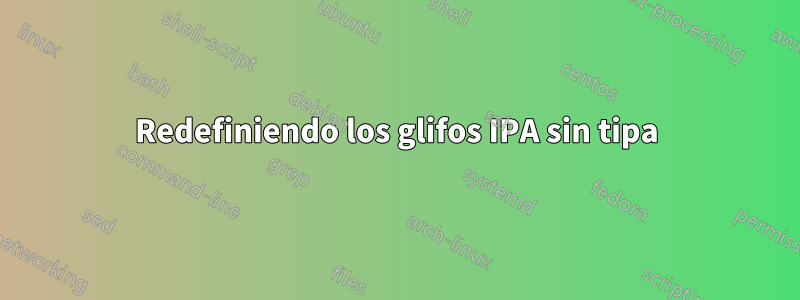
Estoy preparando un artículo que contiene algunos caracteres IPA para enviarlo a una revista y me gustaría encontrar glifos que coincidan con la fuente de la revista. Los generados por tipano coinciden:
Y deesteCreo que esta discusión tipase considera un método heredado de todos modos y deberíamos alejarnos de él. Elplantillade la revista utiliza mathpazofuentes que, creo, no tienen esos glifos.
Aquí hay un MWE:
\documentclass{article}
\usepackage[T1]{fontenc} % I believe fontenc and inputenc are not needed
\usepackage[utf8]{inputenc} % anymore but the journal template still has them
\usepackage{mathpazo}
\usepackage{tipa}
\usepackage{newunicodechar}
\newunicodechar{ʃ}{\textesh}
\newunicodechar{ʤ}{\textdyoghlig}
\newunicodechar{ʧ}{\textteshlig}
\begin{document}
ʃ t ʧ d ʤ
\end{document}
¿Hay alguna manera de definir un glifo diferente para ʃ, ʤ y ʧ, preferiblemente sin usar tipa, que coincida con la mathpazofuente (creo que es Palatino)?
Respuesta1
Podrías usar LinguisticsPro, al menos de los glifos “extraños” y hacer las ligaduras a mano.
\documentclass{article}
\usepackage{mathpazo}
\usepackage{tipa}
\usepackage{newunicodechar}
\newunicodechar{ʃ}{\textesh}
%\newunicodechar{ʤ}{\textdyoghlig}
%\newunicodechar{ʧ}{\textteshlig}
\newunicodechar{ʤ}{d\kern-0.22em\textyogh}
\newunicodechar{ʧ}{t\kern-0.18em\textesh}
\DeclareFontFamilySubstitution{T3}{ppl}{LinguisticsPro-LF}
\begin{document}
Text in Palatino abcdef
ʃ t ʧ d ʤ
\end{document}




